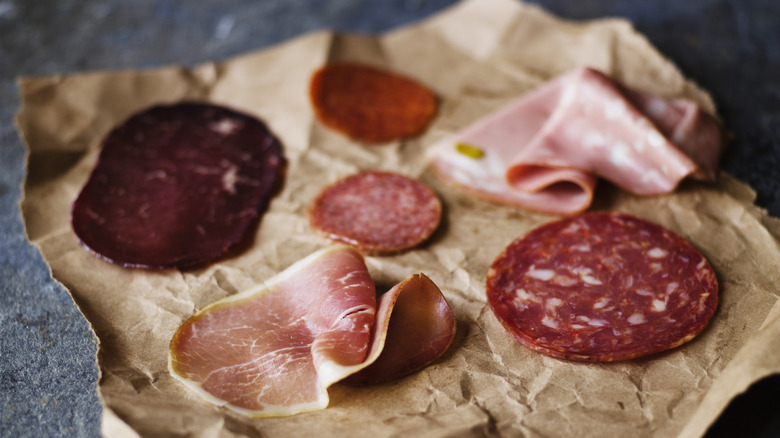What Is Prosciuttini And How Is It Different From Prosciutto?
The world of cured meats and cold cuts is a vast one. Many people are familiar with prosciutto, the thinly sliced Italian dry-cured ham known for its rich taste, delightful texture, and high price tag. But fewer know about its cousin, prosciuttini, a delicious cured meat in its own right.
The most obvious differences between these two are apparent almost immediately. First, prosciuttini is typically rolled in ground black pepper at the end of its curing process. This gives the meat a unique spicy and peppery taste, mixed with a subtle sweetness from other spices that complement the cured pork flavor. It also lends another name to the product, which is sometimes referred to as peppered ham or black pepper ham. Additionally, prosciuttini is often a brighter pink, reminiscent of other hams, while prosciutto is typically a darker red.
The preparation process creates the biggest difference between the two pieces of pork. As far as cuts, both prosciutto and prosciuttini come from the legs of a pig.
Similar names, unique experiences
There are a few other differences cured meat lovers may notice between these two varieties. For one, prosciutto is typically significantly more expensive than prosciuttini. This is a result of several factors, including the long aging time, the specifications for the cut, and strict international trade rules involving true prosciutto. Certain prosciutto can only be produced in the Italian regions of Parma and San Daniele del Friuli.
In comparison, any company anywhere can produce cured pork covered in black pepper and rightfully call it prosciuttini. Despite this, prosciuttini is also generally a bit harder to find, as it remains more of a lesser-known specialty product that buyers might need to find at specialty stores. Comparatively, prosciutto has broken through internationally and can be commonly found in restaurant charcuterie boards and supermarket deli cases alike. So while the differences may be subtle and their names similar, there's no doubt these two meats offer their own unique flavors and textures — both worthy of spots on your next charcuterie board.

